Mini(Compact) Excavator
A tracked or wheeled vehicle with an operating weight of roughly 0.7 to 8.5 tonnes is referred to as a compact or mini excavator. It typically has an independent boom swing and a conventional backfill blade.
Since hydraulic fluid is transferred throughout the entire machine during all movements and operations, hydraulic excavators differ substantially from other construction machinery in this regard. Hydraulic fluid passing upon hydraulic cylinders activates the compact excavator's work group and blade. Hydraulic fluid-driven hydraulic motors also drive the excavator's slew (rotation) and travel functions.
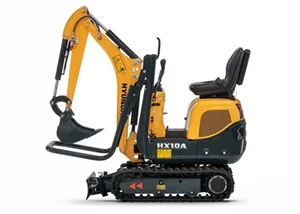
What Sizes Do Micro And Mini Diggers Come In
There are various different sizes micro and mini digger, beneath we have listed the most well known sizes of mini excavator and the description and key benefits of these useful machines.
0.8 Tonne Micro Digger(Excavator)
General Information
These machine will fit through a regular 760mm fence or doorway, making it perfect for working in backyards or other locations with very little access. When working, its extending track system provides more stability, and the roll bar can be lowered to provide access through low-lying places. This machine may be used for many different types of landscaping and other modest jobs thanks to its user-friendly controls.
Features
Track gauge that can be adjusted for optimum access
simple one-lever operation
The best protection is provided by a top mounted boom cylinder and front end hydraulic piping that is routed inside the boom.
ROPS that fold up make it simple to transport them and pass through doors.
extraordinary output.
Benefits and Features
Extremely compact, incredibly reliable when there is a paucity of room and a task requires a lot of effort.

1 Tonne Mini Digger(Excavator)
General Information
Excavators that weigh one tonne are robust, versatile, and long-lasting. These excavators are ideal for jobs including trench-digging, hole-breaking, garbage removal, and mine excavation. The 1-ton digger's sleek and portable design enables it to fit into even the tightest spaces. Even in densely populated regions, it can be safely used because it is silent and comfy.
Features
A rear overhang that is 4 to 12 inches long
An undercarriage that retracts between 28 and 29.5 inches
6 feet is the maximum digging depth, and 7 feet, 8 inches is the maximum digging height.
Mechanical handler with simple construction and high precision pilot joystick to match the Tier 5 and EPA emission standard
A very flexible side-to-side swing boom
A ROPS bar to keep the operator safe
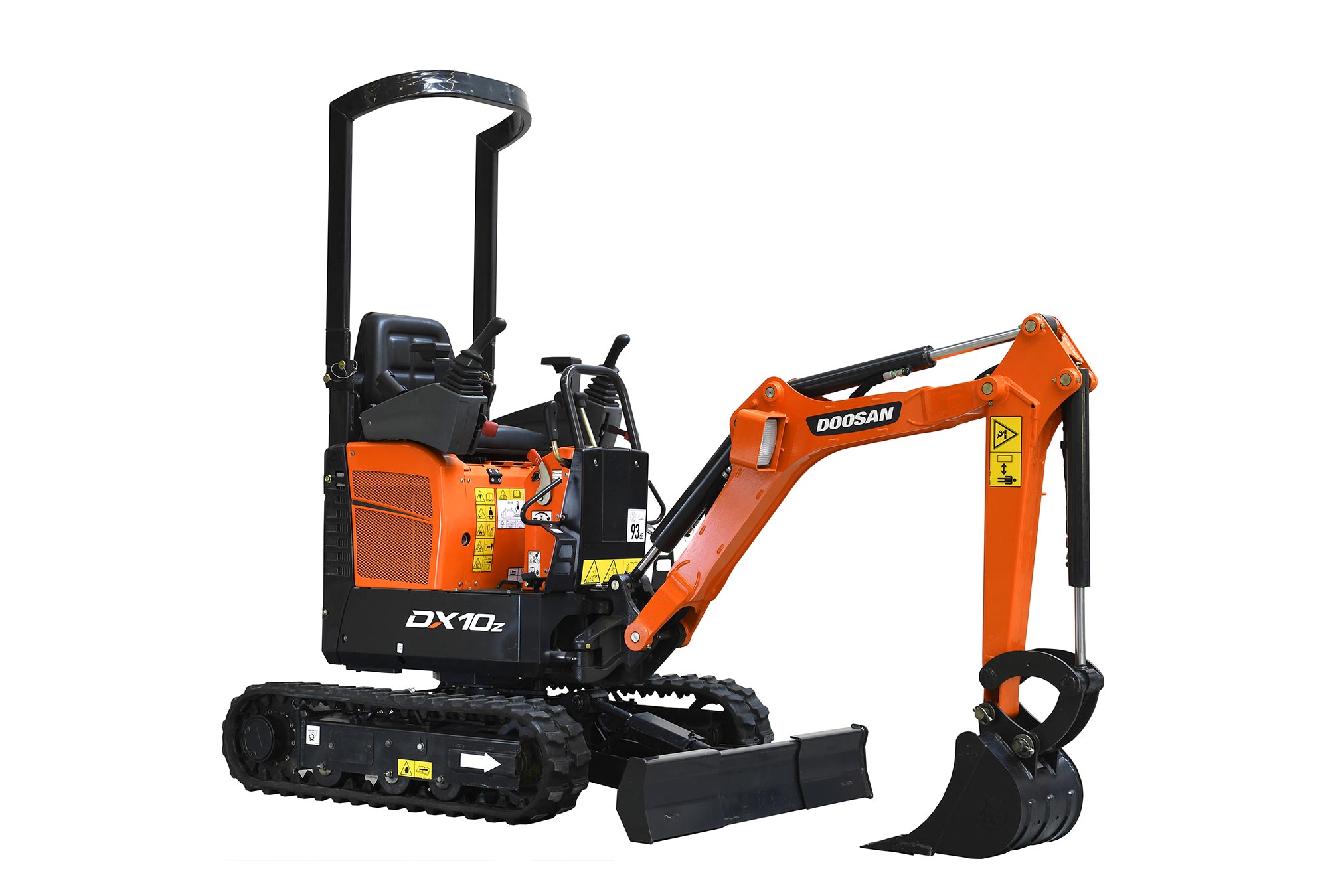
1.5 Tonne Mini Digger(Excavator)
General Information
If you do not have any access issues, the 1.5 tonne mini excavator is the most common size for small regions. For increased stability when digging and tracking, the digger widens its tracks. Although this machine can accept a breaker attachment (breaker price is extra), it cannot accept an auger attachment, and we do not advise using it as a crane.
Features
1055 mm in width
2360 mm in height
Weight, including fuel and buckets, is 1.8 tonnes.
2390mm of digging depth
4035mm in length
Dump height maximum: 2705mm
Tyre tracks
Widening track spacing
A glazed taxi
2 speed monitoring equipment
Blade for a bulldozer with extensions
Swinging off-set boom
Available with different bucket sizes
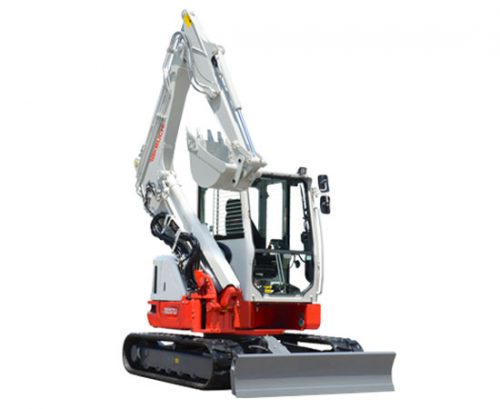
2 Tonne Mini Digger(Excavator)
Description
The 2 tonne diggers include a fully covered cab and the added benefit of hydraulically movable tracks for added support and agility, making them suitable for usage in most situations. Additionally, this contributes to the digger being 100mm narrower than a 1.5 tonne digger with the tracks closed.
Features
Compared to the 1.6, the 2 tonne digger has a number of advantages (based around longer reach and stability)
Considerably broader blade (extension removed for narrow access)
There is a longer track frame.
There is a longer dozer blade.
larger weight
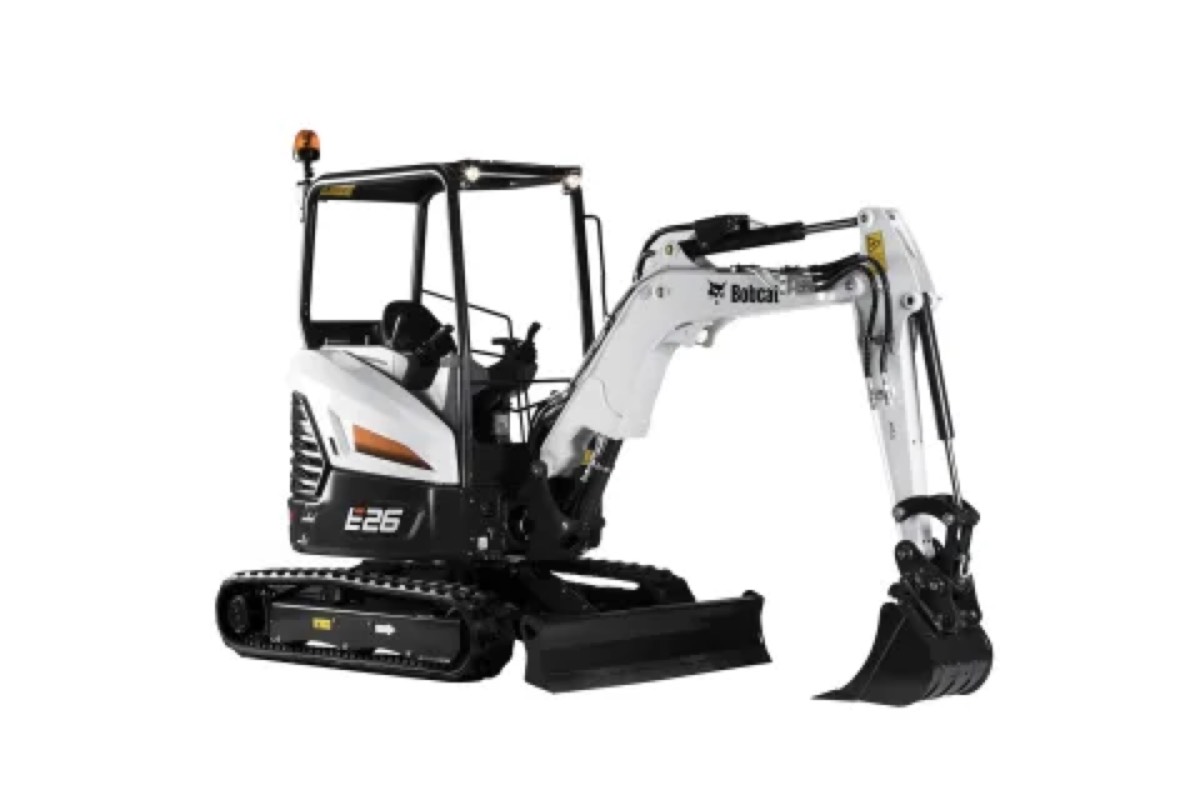
3 Tonne Mini Digger(Excavator)
Description
The largest digging depth and reach of any excavator in its weight class are provided by this 3-ton compact digger. Despite having a long reach and a strong digging motion, it can still be adjusted to a width of only 1.5 metres.
Even though it can narrow down to just 1.5m wide, the 3 tonne compact digger offers operator comfort where other small diggers in its class fall short. It also benefits from lots of stability on tough terrain and a roomy cabin. Additionally, it offers a lot of lift force when required.
Features
Although they have outstanding stability and performance, tracks may adjust up to 1500mm.
Diesel engine with four cylinders and 27.5 PS power output.
The highest digging depth offered by a mini excavator in this class is about 3 metres (2870mm).
powerful lifting and digging abilities.
sturdy and roomy cabin for the safety and comfort of the operator.
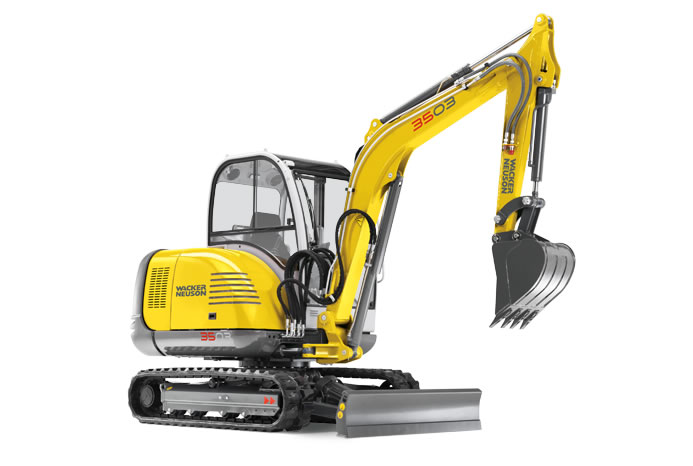
Excavator Attachments and Parts
By swapping out the attachments, excavators can be modified to meet the requirements of a particular job. The following are a few examples of typical hydraulic attachments: buckets, augers, breakers, thumbs, and couplers.
An explanation of each is given below.

Excavator Bucket
The most popular excavator attachment is a bucket. They are perfect for digging and scooping because to their steel construction and teeth-like edges. The most popular types of buckets are those used to dig trenches and grade stones (the "ditching bucket") (the trenching bucket). It's vital to take the soil quality and any potential attachments, like couplers, into account when choosing the sort of bucket to buy or rent.

Mini Excavator Auger
An accessory used to drill into the earth is called an auger. They are quick and effective at excavating deep holes since they are powered by hydraulic circuits. Augers may dig up to 32 feet and range in size from 4 inches to 50 inches.
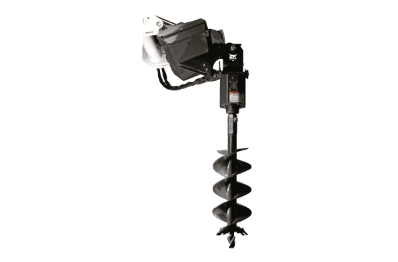
Mini Excavator Breaker
Breakers, which resemble a larger jackhammer, are perfect for breaking through concrete, stone, and other hard surfaces.

Mini Excavator Thumb
For objects that are too big for a bucket, like a tree trunk or concrete slab, thumbs work nicely. They are simple to attach and remove.
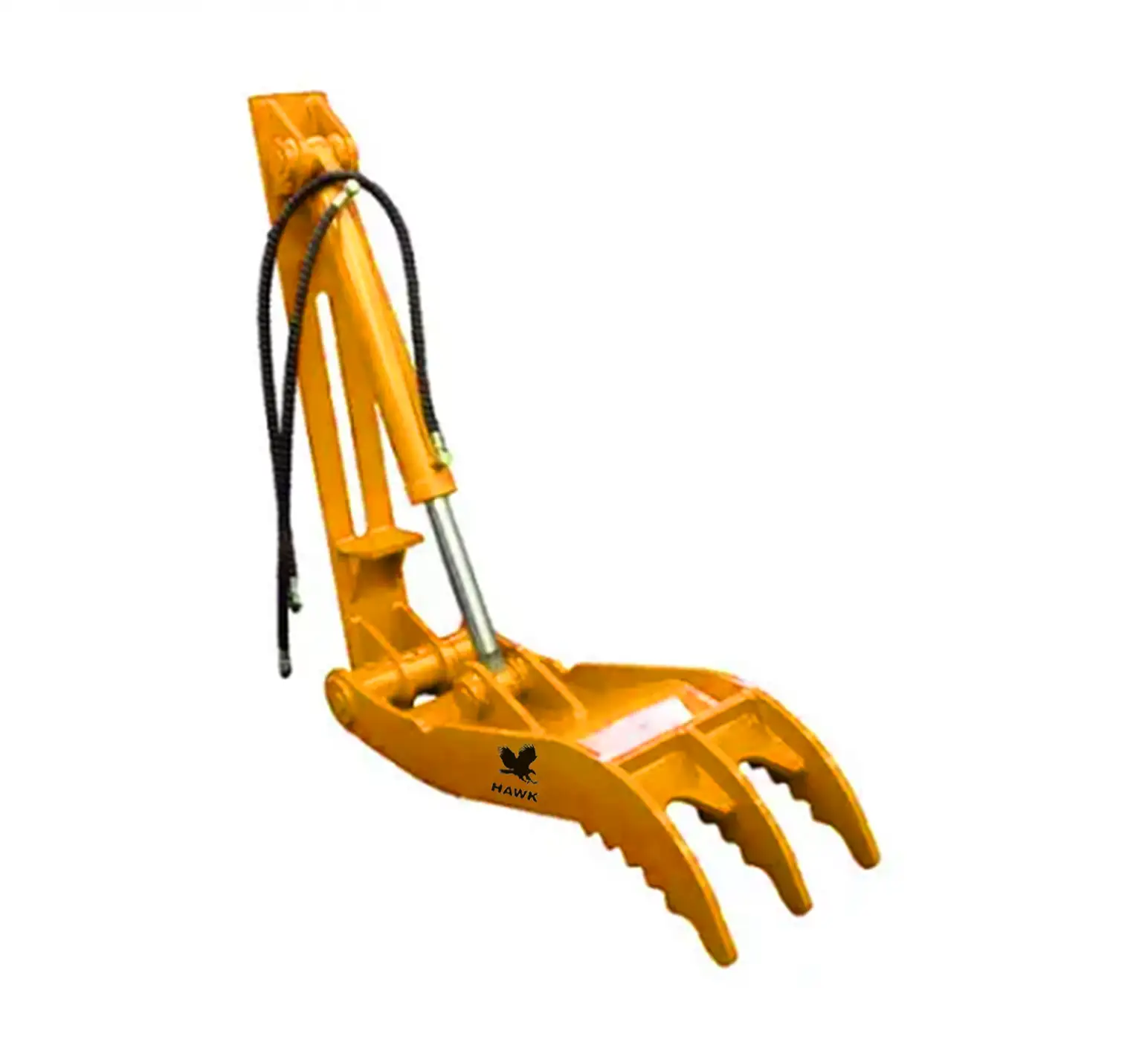
Mini Excavator Couplers
Couplers facilitate and speed up the exchange of attachments. A coupler can help you save time, money, and people if your job necessitates frequent attachment adjustments.
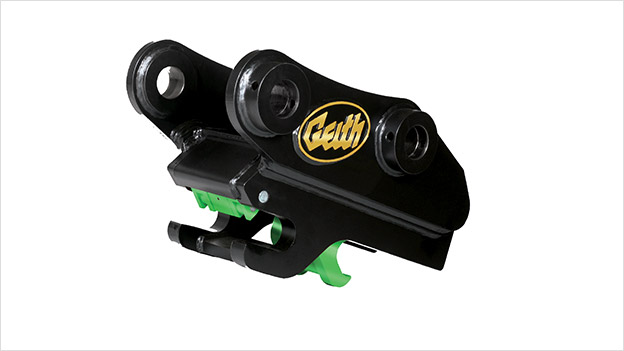
How to Use a Mini-Excavator
These days, everyone is searching for more effective methods of doing tasks. Mini-excavators might hold the solution for both contractors and homeowners. These tools are so adaptable that you may use them for almost any kind of construction task, from breaking up concrete with a hammer to digging holes for landscaping. These user-friendly, adaptable devices are increasingly crucial development tools, especially in cities where constrained space necessitates smaller, lighter machinery.
What can A Mini Digger Do?
To do pipe digging and demolition tasks, attach a hydraulic hammer.
Without stopping traffic at a busy crossroads, dig out a curb or walkway.
To load brush and sort recyclable materials, attach an earth auger and a thumb.
Use for a variety of backyard tasks, such as excavating sewage lines or electrical conduit.
With a hammer attachment, fragment concrete for demolition and recycling.
Using buckets that range from 12 to 24 inches, dig holes for landscaping projects.
Breaking concrete, installing plumbing, and finishing the inside of strip malls with minimising disruption to neighbouring companies.
Old buildings can be renovated because of their light buoyancy, which makes it simple to demolish and remodel them on various levels.
The two equipments, when used with a skid-steer, might occasionally be more cost-effective than a larger backhoe. They can also work on two separate projects simultaneously.
Every kind of digging and soil can be collected in a different style of bucket. To dig footings, for instance, use a 24-inch bucket. To dig utility lines, use a 12- or 18-inch bucket. To drain soggy soil of water and loose dirt, use a 36-inch drainage bucket.
What are The advantages Of Using A Mini Digger?
The sense of full-sized excavators is still present in small minis. These machines are perfect for big excavator operators who dislike bouncing backhoes. For both professionals and homeowners, mini-excavators offer a number of benefits. These devices:
Enter confined spaces; some of them are small enough to pass through yard gates.
Are designed to function similarly to larger excavators; virtually anyone can climb aboard and pick up the controls in a couple of minutes.
Include a quick-coupler attachment enabling quick replacement of any attachment that is mounted on a dipper.
Are far quieter than large machines while moving over concrete and other hard surfaces.
Provide comfortable controls for easy use.
Have light-weight rubber tracks that can manoeuvre through tight spaces with little harm to the ground.
May be transported using the horsepower of a pickup truck and are tiny enough to fit on pull-behind trailers; some even fit in an extended pickup bed.
Use several different types of attachments.
Have a 360-degree swing arc so that additional units, like a dump truck, can be positioned wherever is required. The excavator can then rotate around to deposit the load where it is needed. Usually, dumping height is not a limiting factor.
Possess rubber tracks rather than steel ones, which won't grind and scrape the surface.
In loading the machine for transport, have rubber tracks that don't slide.
Because they don't require commercial driver's licences or specialised highway carrying permits, they can reduce red tape.
How to Use a Mini Excavator
Read the instruction handbook for your tiny digger and any warning stickers that are on it. Next, check the device for any damaged or missing parts. Look out for any leaks, frayed cables, track issues, or other potential dangers.
Make sure to supply the plant with adequate fuel to complete the task. Keep in mind that there are new guidelines for utilising red and white diesel (rebate fuel). Make sure your excavator is filled according to current regulations. Only some industries, such as agriculture, horticulture, and farming, as well as public activities like gritting icy roads, are permitted to utilise fuel that has been rebated. Unfortunately, DIY and construction lack quality. Locate the fire extinguisher and then check the coolant and lubricant levels in the engine. You can now ascend into the control console.
An armrest and controls are located inside the tiny excavator on the left side. Typically, it is raised and moved out of the door's path. Lock the armrest into position by pulling it down. After that, buckle up your seatbelt firmly and scan the operator's console. Find the ignition switch and all other gauges and controls that are present. The ignition switch is typically located above or to the right.
There are a number of joysticks, levers, and pedals in the excavator's cab. The boom and bucket movements as well as the left and right cab rotation are controlled by the joysticks. The front blade, throttle, and driving tracks are all controlled by levers. The high-speed option (if available) and bucket pivoting are controlled by the pedals. Move each control while the digger is off to get a sense for how it responds. The machine reacts instantly to any movement of the controls. It is therefore best to become acquainted with their motion before beginning work.
Learn the basics of the machine
Check out the device
Verify the fuel level, etc
Learn the controls for the console
Is It Easy To Use A Mini Digger(Excavator)?
Once you become familiar with the controls and the machine's movements, mini diggers are rather simple to operate. They are adaptive and versatile.
The device's size, features, and complexity all influence how simple or difficult it is to use. The standard attachments for mini and micro diggers are a front shovel, boom, and swinging bucket, giving the driver strong equipment in a compact package. Larger excavators are more difficult to operate and require skilled heavy equipment operators.
Why Use A smaller Mini Excavator?
Mini diggers are compact and fit readily into a variety of DIY and business applications. Here are just a few advantages that make equipment so alluring:
Choice: There are a few various mini digger models and sizes available. Determine what you plan to utilise it for and the magnitude of this assignment to determine which is best for your project. Also take into account how much room you have on the job site to store the mini digger securely.
Due of their tiny size, they are well-liked by businesses that work across many sites. They are simply moved from one location to another by trailers. The tiny excavator is simple to borrow for homeowners and is the ideal size for home projects.
Less contamination occurs at sites because of the modest size. Topsoil and other outdoor surfaces are less likely to be harmed by the smaller tracks and other attachable equipment.
What Should I Use A Mini Digger For?
The mini digger may be used for any project, no matter how big or small, due to its size. Utilize these to determine the type of Mini excavator that is best for your job.
Digging Holes: Smaller excavators are lightweight and simple to manoeuvre into tight spaces. They frequently include the instruction manuals as well as a number of attachments when they are lent out. This will help you decide which attachment is best for the hole or excavations you want to make.
Micro diggers are excellent for digging while planting trees and bushes in your garden. They are perfect for setting up ground irrigation on a site when properly prepared. They barely affect topsoil or plants because of their small weight. They are essential when adding new garden elements like swimming pools, ponds, and hot tubs. The little digger can move big machinery and prepare the ground for the project.
Mini diggers are the ideal size for tearing down tiny, outdated garden constructions like sheds or fences. Although we don't imply that it can handle full-sized st
What Controls Are On A Mini Digger?
Right hand forward: main boom down.
Right hand back: main boom up.
Right hand left: bucket curl in (closed)
Right hand right: bucket curl out (dump)
Left hand left: swing left.
Left hand right: swing right.
Left hand forward: stick boom (dipper) away.
Left hand back: stick boom (dipper) close.
The ISO pattern is the most typical control configuration for any excavator. The SAE controls are the most common pattern in America. They are comparable but distinct since the controls for the main boom and stick boom are in the opposite positions. The main boom, for instance, can be raised and lowered by sliding the left joystick forward and backward.
Do I Need A License To Operate A Mini Or Micro Digger(Excavator)
On any private property, job site, or access road, a mini digger may be operated without a driver's licence. Therefore, you can excavate ground on your domestic property without obtaining the necessary permits. However, you do require a valid licence if you need to operate any size of digger on a public road.
You must be qualified to work in public areas or along roadsides. You can operate any size rotating-base digging machine in any of these places as a 360 excavator operator.
A valid Construction Plant Competence Scheme (CPCS) card, which you can obtain by taking courses at a training provider, is required in order to operate a 360 excavator. To work on a construction site, you also need a Construction Skills Certification Scheme (CSCS) card.
Advice On Mini Digger Operation Safety
Make sure the detachable roll cage is properly fastened before using the digger if it lacks a cab. A cage can shield people from major harm if the equipment topples over.
Make sure the tracks or wheels lie horizontally to the ground and only drive on flat, firm terrain. It's crucial to maintain stability so you can dig an even trench.
Even if the bucket is empty, avoid swinging it over someone, especially if they are inside a piece of plant equipment or a portable toilet. There's no need to ever put anyone else in danger because anything can happen.
To prevent striking the tracks, wheels, or front blade with the bucket, use care when moving the arm close to the cab. Due to the pneumatic system's strength and the bucket's potential for costly damage.
When digging, take care not to get the track or wheels too close to the trench's edge. Here, the ground and soil may be weaker and more prone to collapsing, especially if they are soft.
Is It Possible To Hire A Mini Digger(Excavator)?
Numerous businesses offer a wide range of tiny (or compact) excavators for rent. Mini excavators can be used for a variety of tasks on the job site, and renting equipment is far less expensive than buying it.
Equipment must be used on site for at least 70% of the time in order to be cost-effective. Additionally, the owner is responsible for paying maintenance, inspection, and insurance fees, and equipment loses value over time. You only need to think about rental and fuel costs if you're using equipment that has been hired from a reliable company.
Do I Need A Licence To Operate A Mini Digger(Excavator)?
Any size of excavator that you intend to operate on a public road will require a valid driver's licence. On private job sites and access roads, however, a licence is not required. Excavator operators are no longer required to be certified in accordance with the 2011 Work Health & Safety Act.
Excavator operators must be knowledgeable and skilled in their use, and they must study and comprehend all offered manuals and information. Legally speaking, operator competency is ultimately the responsibility of the Person Conducting a Business or Undertaking (PCBU). They must to be informed of authorised users and their understanding of proper usage, restraints, safety, and upkeep.
Do I Need To Do A LOLER Inspections On A Mini Digger(excavator)?
Excavators are frequently used for lifting as well as excavation on construction projects. All lifting equipment should undergo routine Lifting Operations and Lifting Equipment Regulations (LOLER) inspections.
A "competent person" skilled in lifting equipment inspections should carry out these, and they must create a written report of their findings. Hire businesses are regarded as suppliers under Section 6 of the Health and Safety at Work Act and are in charge of supplying secure goods.
This includes testing the equipment before to hiring it, rigorous inspections, and periodic inspections. It is possible to set up a written agreement to transfer this to the hiring party for particularly lengthy hire terms. The user is typically exclusively in charge of daily and before-use safety inspections.
How Deep Can A Mini Excavator Dig?
Of course, the size of the model being used is a factor. The TB260 6 tonne can reach 3.895 metres, compared to the Takeuchi TB210R's limited digging depth of 1.755 metres. The reach needed will depend on the exact job, but it is advisable to plan on digging a little deeper than necessary. This accounts for any work-related complexities needing more depth without the requirement for additional equipment. The type of ground should be taken into account while choosing an excavator.
For instance, deeper footings will be required if building is to take place on soft ground. Higher bucket digging force and reach are required in hard soil with a lot of clay. If digging is being done near utility lines and underground pipes (such as broadband cables and electrical supply), careful work must be done to prevent damage. Mini excavators are perfect in these situations due to their relatively shallow digging depth and smaller bucket width.
How Much Weight Can A Mini Digger Lift?
Despite being known as "diggers," excavators are frequently used for lifting and removing obstacles. Even when digging, the trash needs to be lifted out of the way or shifted. The amount of garbage in the bucket will be substantially heavier in the event of rubble, hardcore, or concrete than dirt or comparable materials. The lifting capacity will rise with excavator size, just as digging depth, and should be evaluated prior to hiring.
An excavator's lifting capacity is determined by its hydraulic and tipping capacities. The equipment's hydraulic capacity is the heaviest load it can raise before stalling. The tipping capacity of an excavator is the weight of the load at which it may raise and perhaps topple.
The Operation and Maintenance handbook will provide lift charts based on manufacturer testing, and they will be prominently posted on the machine. Typically, the operator will be able to see this easily because it is in the cab or canopy. It should be noted that lift capabilities are adjusted when used on slopes or uneven terrain because they are estimated for use on level, even surfaces.
On the website of the hire company, the specs for the excavator should include the lifting capacity. If you're unsure, get in touch with the business to make sure you have the right tools for the job. Lifting requires extreme caution because any accident could have disastrous effects on the operator and adjacent coworkers.
How Heavy Is A Mini digger(Excavator)?
Although mini diggers can weigh as little as one tonne, mini excavators are typically characterised as machines with a weight below 7 tonnes.
One of their main advantages is that they are made of lightweight materials, which enable them to function without damaging sensitive or delicate surfaces. Furthermore, expanding rubber tracks are a standard feature on most versions, further distributing the equipment's weight. For indoor work or on finished surfaces, they are perfect for this.
Larger versions' heavier weight and metal rails can easily scratch or rip flooring or pavement edges because to their increased weight. Mini excavators are very lightweight, making it simple to transfer them by truck or trailer.
Manufacturers Of Mini Diggers We Supply
We supply mini diggers from Bobcat, Kubota, Caterpillar and JCB.
Bobcat Mini Diggers We Supply
Adapt Digger Hire Hertfordshire Copyright© 2022 All Rights Reserved